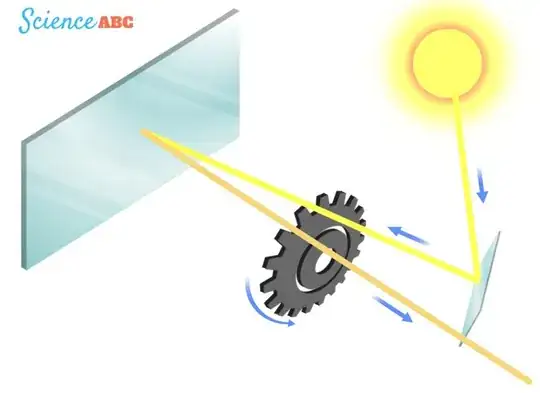I know many people (including me) are bombarding this site with questions about the recent Veritasium video about the one-way speed of light, but I think I found a way.
Here it is: (You can see sort of what I am talking about in the picture I attached. Just pretend the mirrors aren't there.)
You could set up a light source and direct it toward a spinning object/wheel with teeth (like the diagram). Then, by adjusting the rotation rate of the wheel, you could see when the light reaches the other side of the wheel/gear (no need to measure how long it takes to get there or back—this eliminates the need for clocks at all [other than any ones need for calibrating the rotation of the wheel]). By knowing the distance the light has to travel to get to the gear, you would be able to calculate its speed if you knew that it passed through the gear at a certain time (based on the rotation rate of the wheel). I know this is very similar to how the speed of light was calculated by Fizeau, but by eliminating the reflection of the light, I believe this setup would work. Am I missing something, or is this possible?
Also, please let me know if my procedure was too incoherent.
